Hanna’s Tavern
Introduction
Text-to-speech Audio
Hanna’s Tavern was one of the most important structures in Hanna’s Town. It served as a reliable waystation for those traveling down Forbes Road and it was a bustling place where locals came together during the height of the 18th-century. The tavern consists of a main public gathering room, a bar and grill, a private guest room, a travelers' bedroom, and the Hanna family bedroom. The private room would have been reserved for important quests or those who could afford the space while most travelers would be placed 5 to a bed in the shared bedroom. Hanna’s Tavern was also home to quarterly court sessions and was the location of the signing of the Hanna’s Town Resolves, a precursor to the Declaration of Independence.
Images
Hanna’s Tavern sign
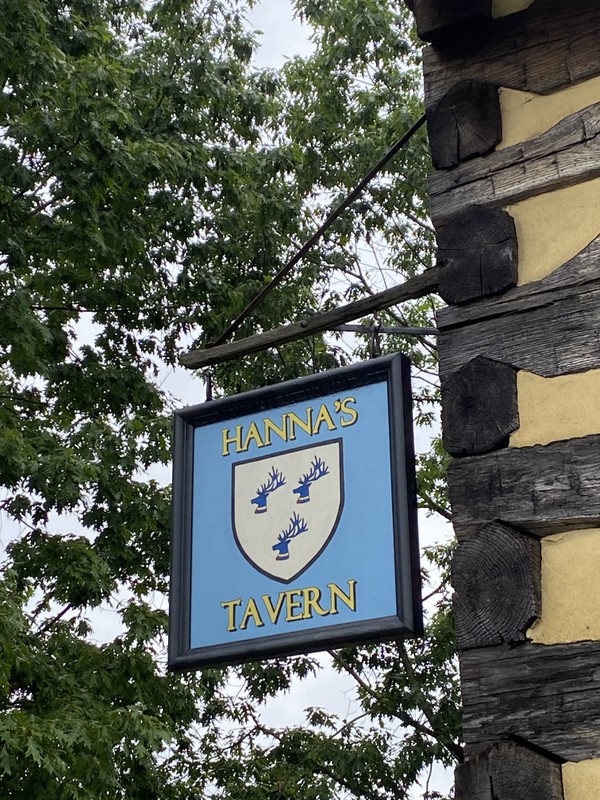
Outside of Hanna’s Tavern
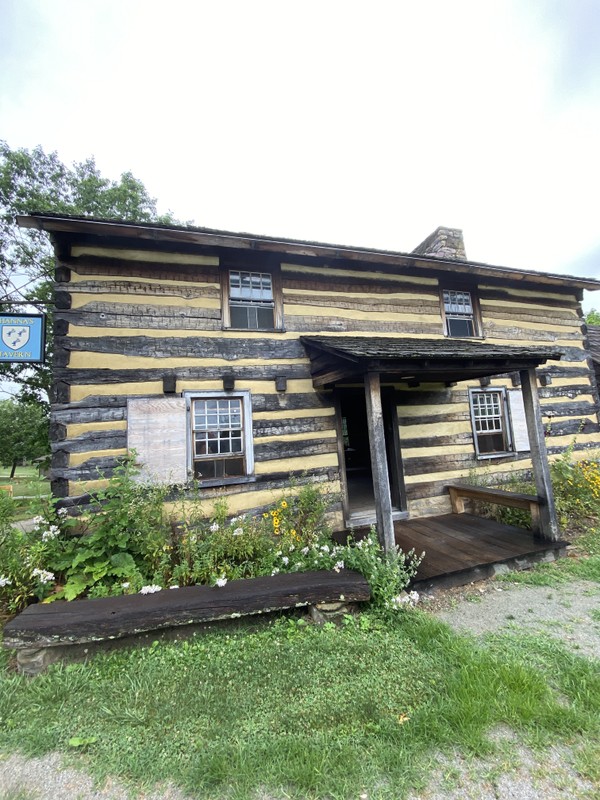
The main floor of the tavern
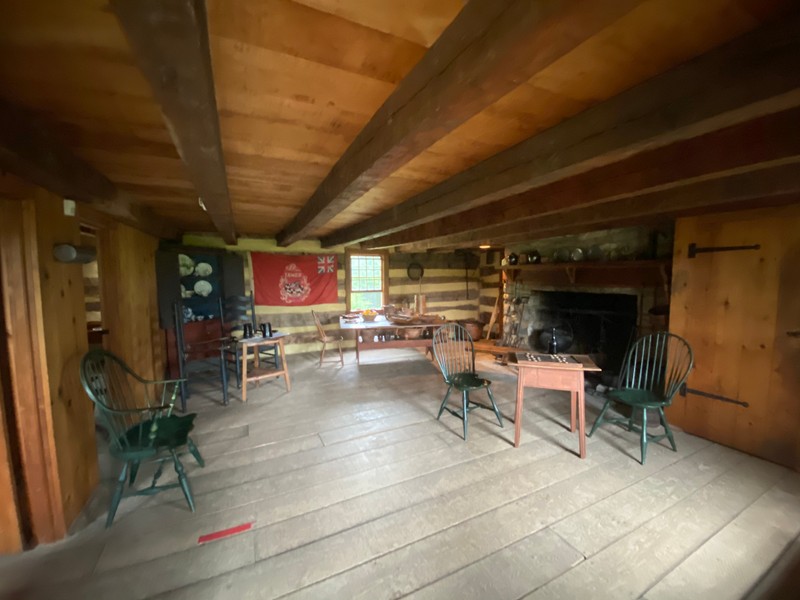
The guest bedroom of Hanna’s Tavern
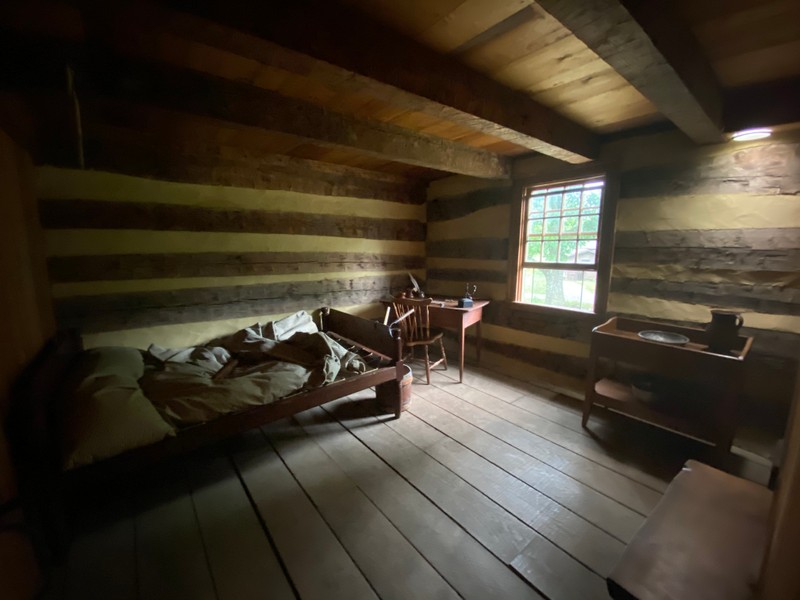
Outside of Hanna’s Tavern
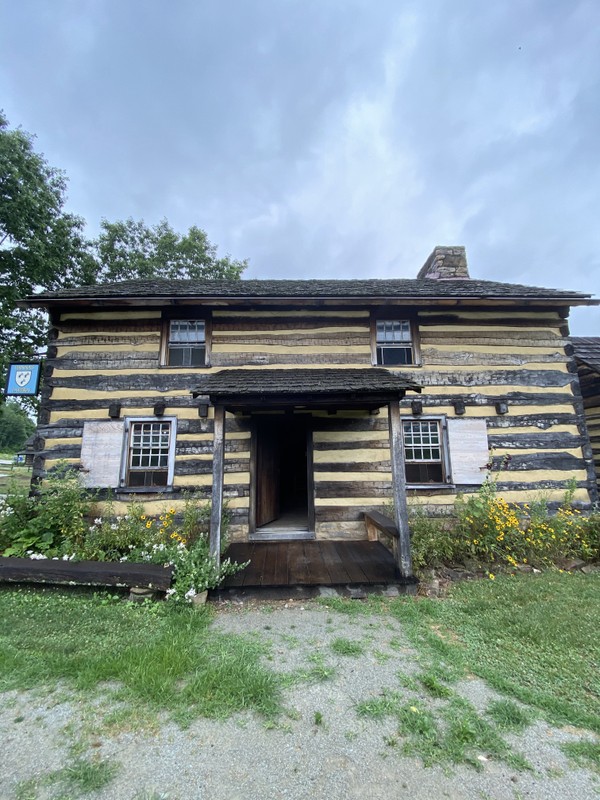
The Hanna’s Family Quarters
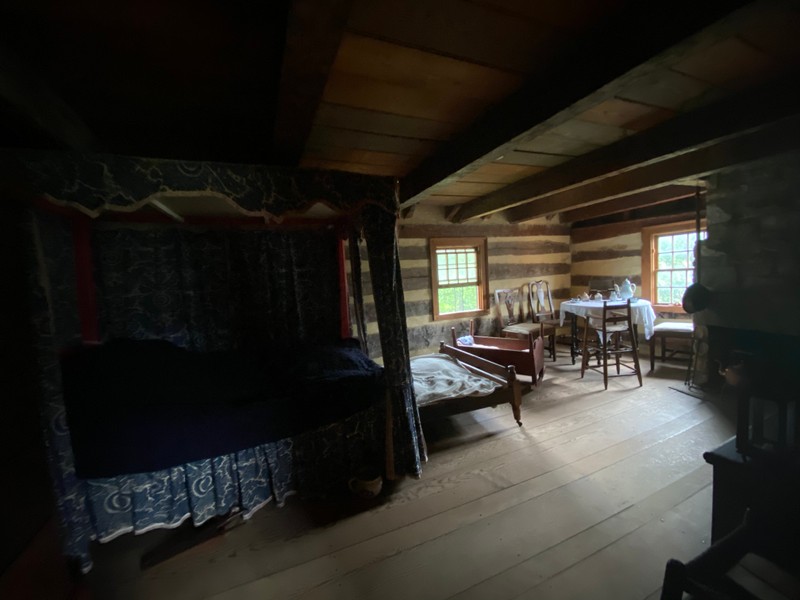
The travelers bedroom
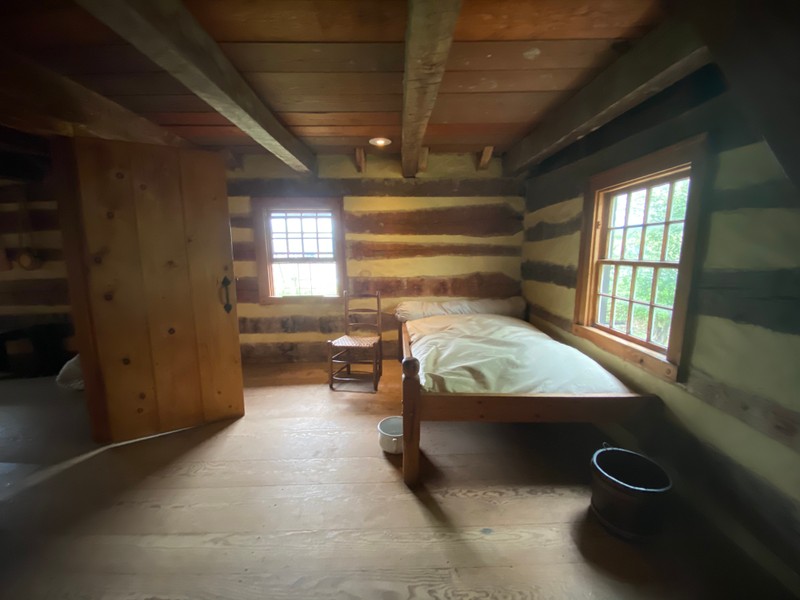
A game of cards on the tavern table
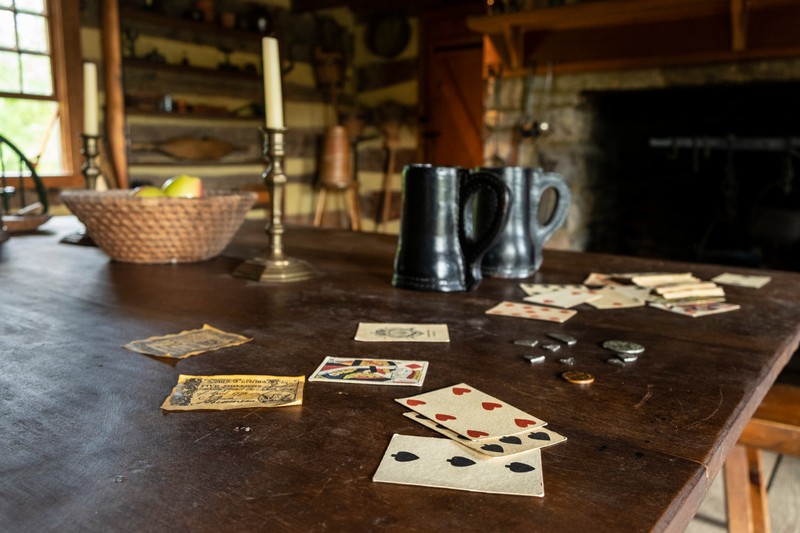
The outside of the tavern from Forbes Road
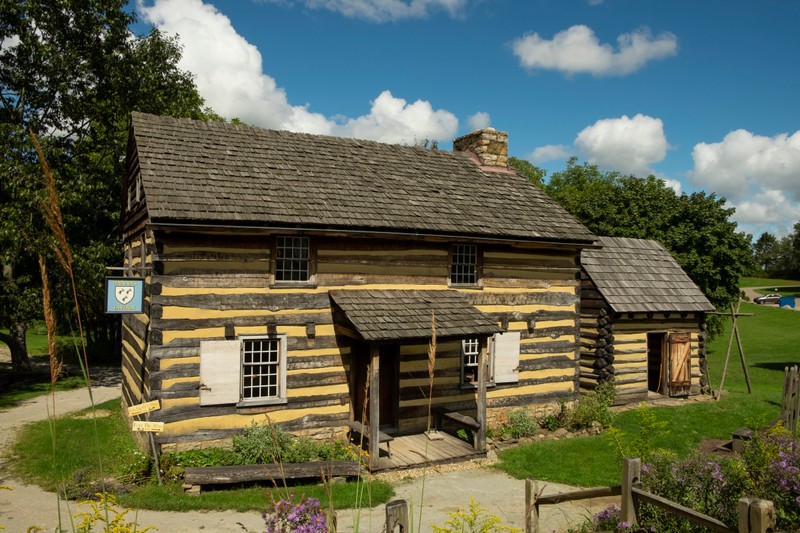
Tavern table
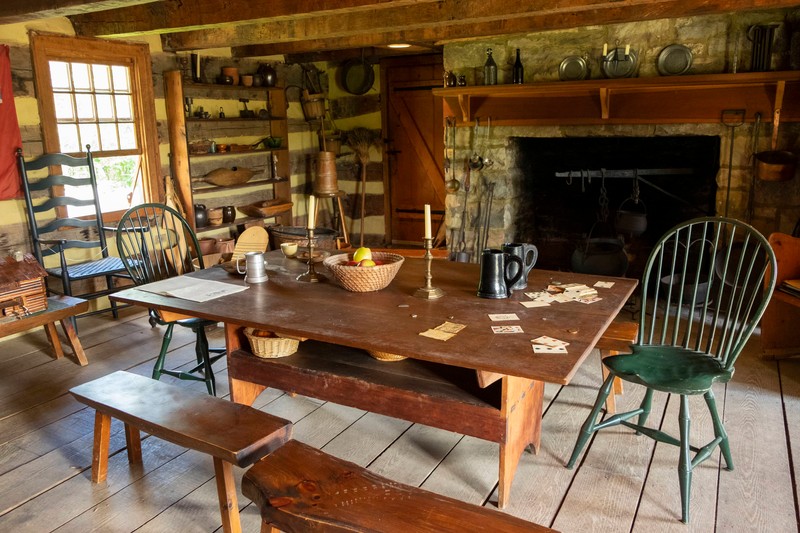
Tavern table setup
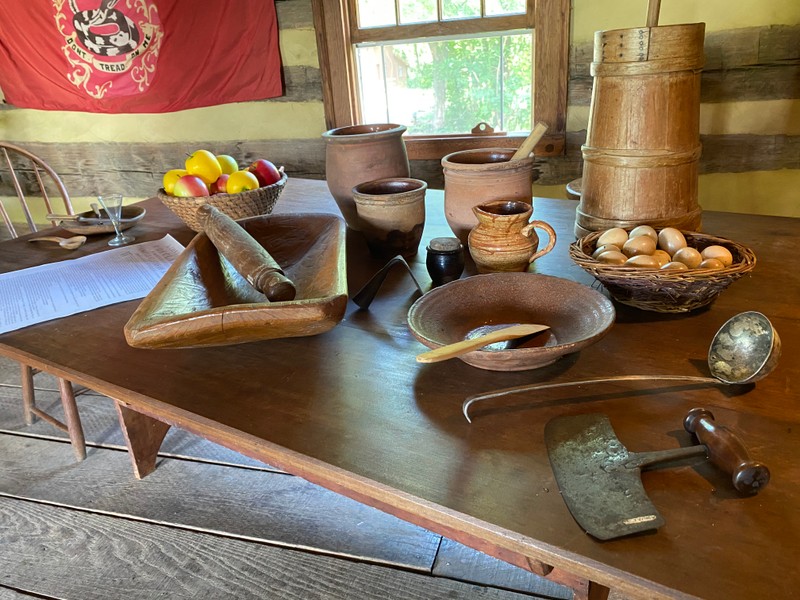
Backstory and Context
Text-to-speech Audio
Robert Hanna emigrated from Northern Ireland in 1736. His father, Patrick, relocated the family to Newburgh Township in York County between 1738 and 1739. Robert Hanna married Elizabeth Kelly of Lancaster County in 1762 and the pair had their first daughter, Jane. Approximately seven years later, Robert applied for a survey of land around Forbes Road. He and his family moved onto that land by 1772, thus founding Hanna’s Town. The new town thrived and eventually ended up being named the county seat of Westmoreland County in February of 1773, with Hanna’s Tavern being the location of the county court.
Taverns in the mid to late 18th century were multi-purpose buildings. Along with housing and feeding visitors of the town, the tavern would also serve as a home for the family of the tavern keeper as well as a courthouse for the court of quarter session. Because Hanna’s Town was the first and founding county seat of Westmoreland County, and Robert Hanna was the founder and head judge of the Town, court was held in Hanna’s Tavern. The tavern was used for business, as well as church services on some occasions. Being a small subsistence farming community, there were no other businesses in Hanna’s Town other than the tavern and Blacksmith shop. Because the tavern was self-serving and multi purposeful, there was no need for any other businesses. Archaeological data reveals that there were at least two other existing taverns at Hanna’s Town: Foreman’s Tavern and Orr’s Tavern.
Being the county seat, court was held at Hanna’s Town quarterly in January, April, July, and October. Court was a busy time and brought a lot of different people who wanted to socialize and conduct businesses. With the Court Days, there were also forms of entertainment. Traveling performers and entertainers would come to Hanna’s Town and the court cases themselves were entertaining for the community to watch. Traveling merchants and tradesmen also came to sell their goods at Hanna’s Town during Court Days. Charles Foreman, owner of Foreman’s Tavern, and Arthur St. Clair, who later became president of the Continental Congress and governor of the Northwest Territory, were court justices alongside Robert Hanna. Court cases were tried at Hanna’s Town during the late Colonial Period, the Revolutionary War period, and the early days of the Republic until the court was moved to Greensburg in January of 1787.
Following the battles of Lexington and Concord in 1775, the court decided to issue the Hanna’s Town Resolves where the people of Westmoreland County protested the injustices of Parliament while still staying loyal to King George III. The Resolves said that the county would resist the acts that were put in place in Lexington and Concord and would raise a militia to defend the region. It is unknown who signed the Hanna’s Town Resolves because they were unfortunately lost to history, however the memory of the Resolves is preserved in a newspaper.
Hanna’s Tavern had two rooms for travelers to stay in. The first of which was a guest room that had nicer accommodations than the basic travelers bedroom. The guest bedroom was for more wealthy travelers who could pay for the privacy of a single room rather than a single spot in a bed. Some of the people who may have stayed in the room would have been court justices, traveling religious figures, notable members of society, or women. Any other guests would have to stay in the traveler’s room that the Hanna’s had in their tavern. When traveling, rooms were few and far between and when renting somewhere to sleep for the night, travelers would rent a space in a bed and a meal. The Hanna’s would squeeze as many people as they could into one bed after feeding them a meal and oftentimes there would be travelers sleeping on the floor on pallets with spare bedding. The mattresses were filled with leaves, straw, grass, and cornhusks so disease and illness spread quickly through travelers sleeping in taverns during this time. Since the travelers slept so close together, lice, mites and bacteria were often living with them, thriving on the travelers’ sleeping bodies.
Together, Robert and Elizabeth had four children: Jane, Elizabeth, Margaret, and Susanna. It is unclear if the Hanna’s stayed in the tavern as their primary residence or lived in a home outside of the tavern but their bedroom was designed in typical 18th century decor. Their quarters were very small and the family of six likely shared a room.
In the 18th century, people knew that water was often contaminated and alcohol was seen as a safer alternative. Drinks in the bar included assortments of ales, whiskeys, ciders and malts. Every tavern that sold beer had to be licensed to the tavern owner. It is recorded that the Hanna’s Tavern license was registered under Robert’s daughter, Jane's name. As far as currency was concerned in Hanna’s Town, colonists tended to use Spanish and English coins because the coins allowed for a universal currency across the colonies. Paper money was not as widely accepted in the 18th century and the most common way of paying for a meal, drink, or place to stay was to barter or trade for it.
Through archeological digs, Hanna’s Tavern was reconstructed on the site it would have been placed in prior to the burning of the community in the 18th century. The tavern was reconstructed on July 11th, 1973, on the bicentennial birthday of Hanna’s Town and Westmoreland County. The tavern itself is not original, but when being reconstructed, period-correct construction techniques were used to bring the building to life.
Sources
Westmoreland County Historical Society. 2020. “Hanna’s Town Tour Manual”. Westmoreland County Historical Society.
